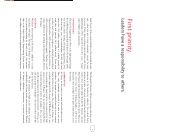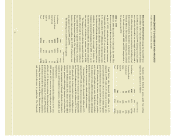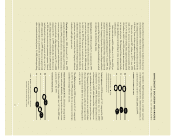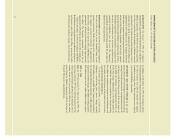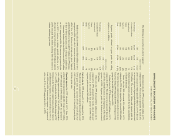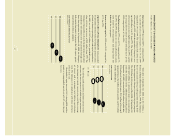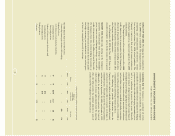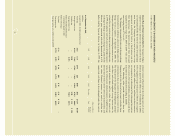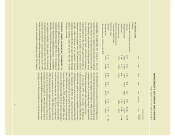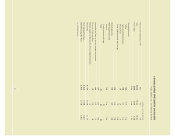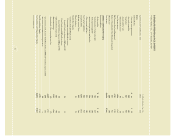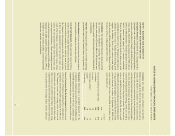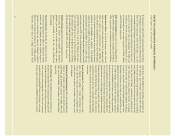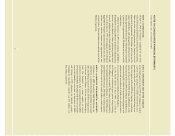Tyson Foods 2000 Annual Report Download - page 29
Download and view the complete annual report
Please find page 29 of the 2000 Tyson Foods annual report below. You can navigate through the pages in the report by either clicking on the pages listed below, or by using the keyword search tool below to find specific information within the annual report.
MANAGEMENT’S DISCUSSION AND ANALYSIS
TYSON FOODS, INC. 2000 ANNUAL REPORT
Concentrations of Credit Risk The Company’s financial
instruments that are exposed to concentrations of credit risk
consist primarily of cash equivalents and trade receivables.
The Company’s cash equivalents are in high quality securi-
ties placed with major banks and financial institutions.
Concentrations of credit risk with respect to receivables are
limited due to the large number of customers and their
dispersion across geographic areas. The Company performs
periodic credit evaluations of its customers’ financial
condition and generally does not require collateral. No single
group or customer represents greater than 10% of total
accounts receivable.
RECENTLY ISSUED ACCOUNTING STANDARDS On
October 1, 2000, the Company adopted Financial Accounting
Standards Board Statement (SFAS) No. 133, “Accounting for
Derivative Instruments and Hedging Activities,” as amended by
SFAS Nos. 137 and 138. This statement establishes accounting
and reporting standards, which requires that all derivative
instruments be recorded on the balance sheet at fair value. This
statement also establishes “special accounting” for fair value
hedges, cash flow hedges and hedges of foreign currency expo-
sures of net investments in foreign operations. The Company
has determined the business processes related to hedging activ-
ities mainly consist of grain procurement and certain financing
activities. The adoption on October 1, 2000, resulted in the
cumulative effect of an accounting change of approximately
$9 million being charged to other comprehensive loss.
In December 1999, the Securities and Exchange
Commission issued Staff Accounting Bulletin (SAB) No. 101,
which provides guidance on the recognition, presentation
and disclosure of revenue in financial statements filed with
the Commission. SAB 101A was released on March 24,
2000, and delayed for one fiscal quarter the implementation
date of SAB 101 for registrants with fiscal years beginning
between December 16, 1999, and March 15, 2000. Since the
issuance of SAB 101 and SAB 101A, the staff has continued
to receive requests from a number of groups asking for addi-
tional time to determine the effect, if any, on registrant’s
revenue recognition practices. SAB 101B issued June 26,
2000, further delayed the implementation date of SAB 101
until no later than the fourth fiscal quarter of fiscal years
beginning after December 15, 1999. The Company believes
the adoption of SAB 101 in fiscal 2001 will not have a mate-
rial impact on its financial position or results of operations.
dollars in millions
Fair value
2000 2001 2002 2003 2004 Thereafter Total 10/2/99
As of October 2, 1999
Liabilities
Long-term debt, including current portion
Fixed rate $173 $126 $ 30 $178 $29 $794 $1,330 $1,299
Average interest rate 6.82% 8.18% 7.83% 6.18% 7.08% 6.78% 6.87%
Variable rate $ 50 $ 17 $291 – – $ 50 $ 408 $ 408
Average interest rate 5.51% 7.67% 5.85% – – 3.90% 5.65%
Interest rate derivative financial
instruments related to debt
Interest rate swaps
Pay fixed $ 17 $ 18 $ 20 $ 22 $21 $ 29 $ 127 $ (1)
Average pay rate 6.71% 6.69% 6.73% 6.73% 6.71% 6.50% 6.66%
Average receive rate– USD 6 month LIBOR
27


